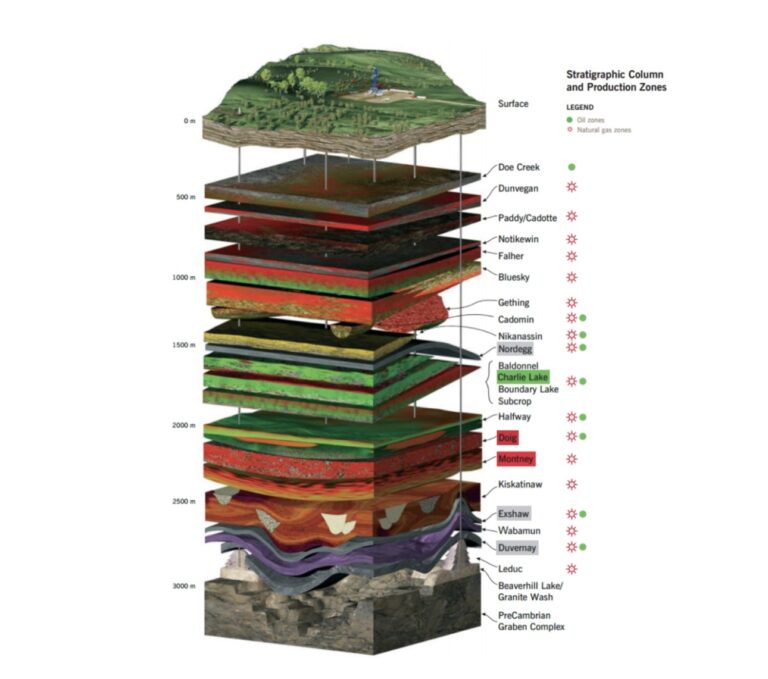
Tight Gas Exploration: Geological Dynamics
Exploring Unconventional Resources: A Comparative Analysis
Several weeks back, a comprehensive exploration into unconventional resources unfolded, focusing on key play types with notable importance—shale gas and tight gas. These play types, characterized by their volumetric, technological, and economic significance, recently gained spotlight as Chevron invested over $4B in an unconventional gas company.
Shale Gas Plays: Unveiling Geological Nuances
Among the prominent shale gas plays are the Barnett in Texas, the Marcellus in the eastern US, and the Duvernay in Alberta. These geological hotspots showcase distinctive characteristics, with grain size mostly comprising mud, porosity levels up to 6%, and a source predominantly self-sourced. Silica, the brittleness determinant, originates from biogenic crypto-crystalline formations.
Tight Gas Plays: Navigating Investment Dynamics
Tight gas plays, which experienced a peak exploration boom approximately five years ago, continue to attract significant investment, especially in well-understood areas boasting favorable reservoir properties. Examples such as the Bakken in northern US and the Montney in Alberta exemplify the enduring allure of tight gas exploration. Noteworthy differences include grain size predominantly silt or fine sand, higher porosity up to 8%, and source materials sourced extra-formationally.
Comparing the Unconventional: Shale Gas vs. Tight Gas
Exploring the nuances of unconventional gas reservoirs, the differentiation between shale gas and tight gas plays emerges through detailed comparison. This analysis illuminates the unique aspects of each type, offering insights into their distinct geological and operational characteristics.
- Grain Size and Porosity: Shale gas formations typically exhibit finer grain sizes and lower porosity compared to tight gas sands, affecting fluid flow dynamics and extraction techniques;
- Total Organic Carbon (TOC): A key factor in gas generation, TOC levels are generally higher in shale plays, contributing to their potential as rich hydrocarbon sources;
- Permeability: Shale formations are characterized by extremely low permeability, necessitating hydraulic fracturing to enhance gas extraction. Tight gas formations, while also low in permeability, are often more amenable to traditional extraction methods;
- Source and Trap: The differentiation between self-sourced shale gas, where the gas is generated and trapped within the same formation, and tight gas, which may be sourced from adjacent formations, underscores the importance of geological understanding in exploration;
- Facies and Hydrodynamics: Variations in depositional environments and fluid movement patterns influence reservoir quality and gas saturation levels, guiding exploration and production strategies;
- Gas Storage Mechanisms: Shale gas is predominantly stored within organic matter or adsorbed on mineral surfaces, while tight gas is mainly found in pore spaces, impacting recovery techniques;
- Silica Origin: The role of silica, whether as biogenic crypto-crystalline in shales or detrital quartz in tight gas sands, affects reservoir quality and drillability;
- Exploration Methodologies: The distinct geological features of shale and tight gas plays necessitate tailored exploration and production approaches, highlighting the importance of technological innovation and adaptive strategies in unlocking their energy potential.
By delving into these specifics, the comparative analysis not only delineates the distinctions between shale gas and tight gas plays but also enriches our understanding of their geological and operational complexities.
Navigating the Grey Area: Over-Generalization Challenges
While attempting to generalize, there lies a distinct grey area, exemplified by muddy siltstones in the Montney region exhibiting characteristics from both shale and tight gas columns. Over-generalization poses challenges, and acknowledging the nuanced geological spaces is crucial for a comprehensive understanding.
Relevance in Exploration Strategies
The overarching similarity in developing both shale and tight gas plays—through horizontal wells and fracture stimulation—underscores the importance of nuanced exploration strategies. The essence of exploration lies in understanding the subtle differences and adapting methodologies accordingly, ensuring successful ventures into these economically pivotal geological realms.

















